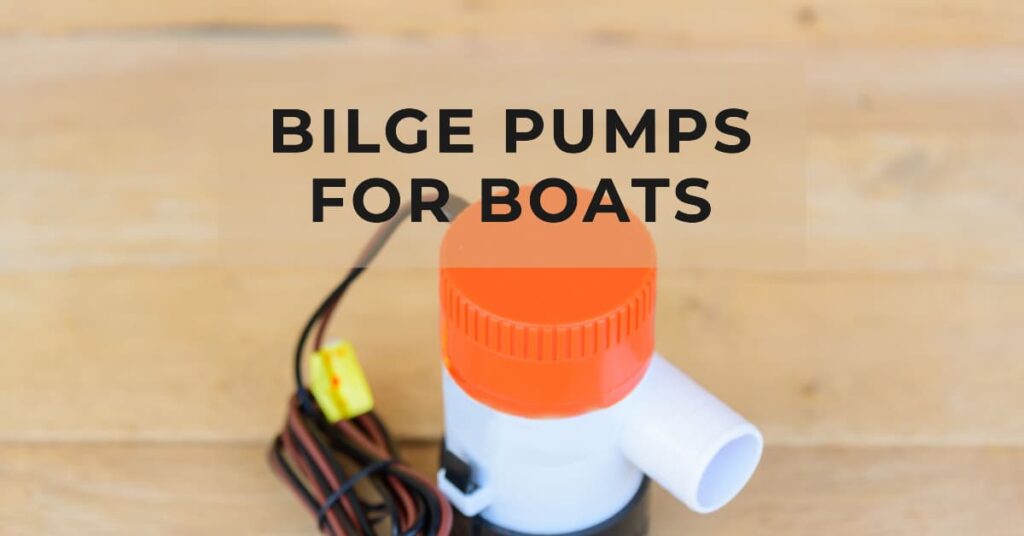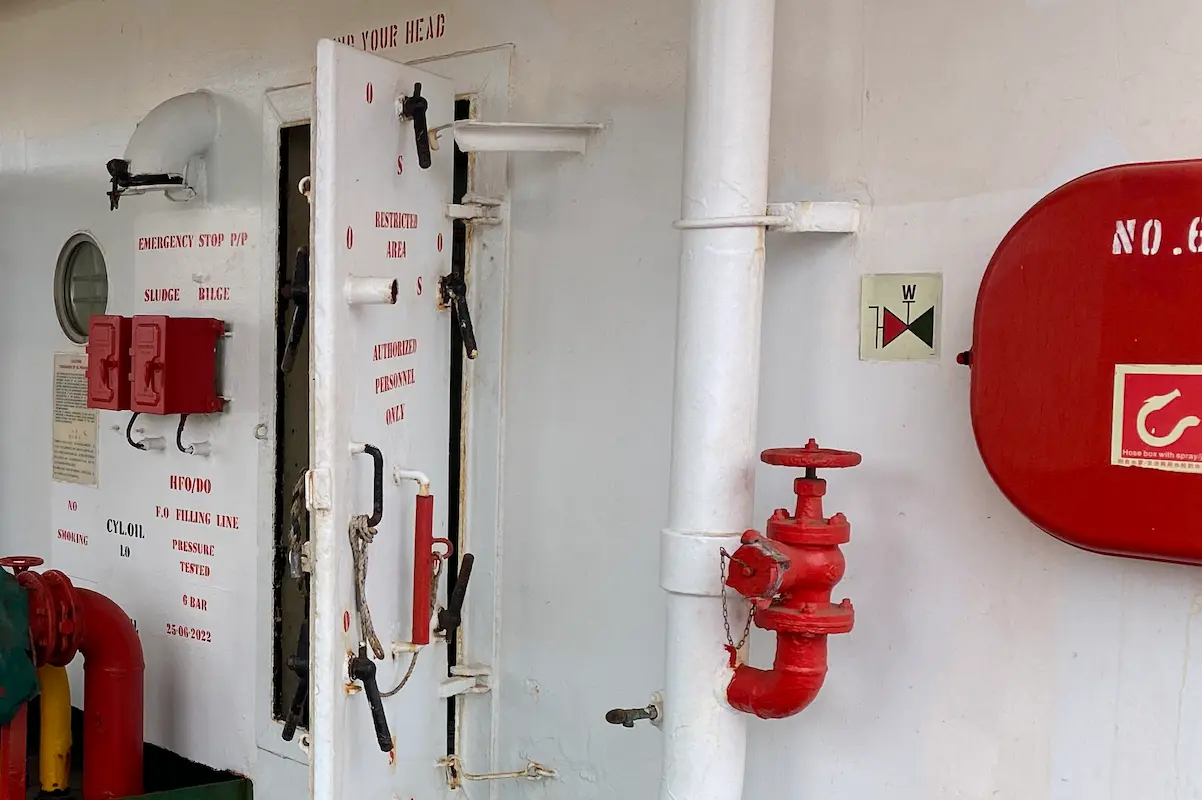To maintain the safety and integrity of a boat, certain equipment is non-negotiable. One such critical piece of equipment is the bilge pump. Yes, we’re talking about bilge pumps for boats.
Whether you’re an experienced sailor or a novice boat enthusiast, understanding bilge pumps’ importance, operation, and selection can significantly enhance your boating experience.

Grasping the Basics of a Bilge Pump
You may find yourself asking, “What exactly is a bilge pump?” Picture this: you’re out on the water, having the time of your life. Suddenly, you notice that your boat is taking on water. Alarm bells start to ring. However, if you have a bilge pump installed, you’re covered. This piece of equipment is designed to remove bilge water that has made its way into the boat.
Without a reliable bilge pump, water ingress could lead to potential flooding, making your boat unstable and, in extreme cases, even causing it to sink. To avoid turning your pleasure trip into a disaster movie, it’s crucial to have a bilge pump on board. For a more in-depth understanding, check out this informative article on the purpose and importance of a bilge in a boat.
What is a Bilge Pump and Why is it Crucial?
In the realm of boating, there’s an unsung hero that quietly guards your vessel against potential disaster – the bilge pump. Whether you’re sailing across the globe or just going for a quick fishing trip, having a bilge pump onboard is absolutely vital. But what exactly is a bilge pump and why is it so crucial?
What is a Bilge Pump?
In simplest terms, a bilge pump is a water pump used to remove bilge water from the lowest part of the boat, aptly known as the bilge. The bilge is the area that collects water from various sources like leaks, waves, and condensation. If left unattended, this water can accumulate and cause stability issues or even sink your boat.
The bilge pump’s primary role is to expel this excess water overboard, ensuring the boat remains afloat and safe. They come in different types and sizes to cater to various kinds of boats, from small fishing boats to large commercial vessels.
Why is a Bilge Pump Crucial?
Prevents Flooding
The first and foremost reason is to prevent the boat from flooding. As we mentioned, water can enter your boat from various sources. Even a small leak can lead to substantial water accumulation over time. Bilge pumps help keep the water level in check.
Ensures Stability
A boat loaded with water becomes heavier and can become unstable. This instability can lead to tilting or listing, making it harder to control the boat and increasing the risk of capsizing. By getting rid of excess water, bilge pumps help maintain the stability of your boat.
Safety Measure
In case of a major breach in the boat’s hull or severe weather conditions leading to water ingress, the bilge pump acts as an essential safety device, buying you crucial time to either fix the issue or abandon ship safely.
In essence, the humble bilge pump plays a significant role in maintaining the safety and seaworthiness of your boat. Having a reliable and efficient bilge pump isn’t just a good idea—it’s a crucial part of responsible boating. It’s this unglamorous hero that can make the difference between a beautiful day on the water and a truly terrible one.
Diverse Types of Bilge Pumps: An Overview
The marine world offers a variety of bilge pumps, each designed to cater to different vessel sizes and specifications. Here, we explore two broad categories: manual and electric bilge pumps.
Manual Bilge Pumps
Manual bilge pumps rely on human power and are typically installed as secondary backups on boats equipped with primary electric bilge pumps. They are lifelines when the power supply is compromised or when the primary pump fails.
Diaphragm Pumps
Manual diaphragm pumps operate on a simple principle: as the diaphragm is manually moved up and down, it creates a vacuum that sucks water in through a one-way valve. When the diaphragm is pushed down, the water is expelled through another one-way valve.
These pumps are reliable and can handle small debris without clogging. However, they require a significant effort to pump large volumes of water.
Piston Pumps
Piston pumps operate by creating a vacuum using a manual piston within a cylinder. When the piston is raised, water is drawn into the pump; when it’s pushed down, water is expelled.
While they require a bit more effort than diaphragm pumps, piston pumps are often more powerful and efficient at moving water.
Electric Bilge Pumps
For most modern boats, electric bilge pumps are the mainstay. They offer automated operation and higher pumping capacity, making them well-suited for larger vessels or those with more substantial bilge water removal needs.
Centrifugal Pumps
Centrifugal electric bilge pumps use an impeller to create a flow of water. The impeller’s rapid rotation generates centrifugal force, which drives the water out of the pump. These pumps are popular due to their simplicity, reliability, and high-capacity output. However, they are not self-priming, meaning they need to be installed below the waterline and can’t run dry without risking damage.
Diaphragm Pumps
Electric diaphragm pumps operate similarly to their manual counterparts but are driven by an electric motor instead of manual force. These pumps are self-priming and can run dry without damage, which makes them a versatile choice. However, they generally have a lower capacity than centrifugal pumps and may clog more easily with debris.
By understanding these distinct types of bilge pumps, you can make a more informed decision about which is best suited to your boating needs. Remember that the ultimate goal is to ensure the safety and longevity of your vessel through proper water management.
How Do Automatic Bilge Pumps Work?
Automatic bilge pumps have become a popular choice for boat owners, and it’s easy to understand why. They provide a level of convenience and peace of mind that’s hard to beat. But how exactly do these ingenious devices work? Let’s dive in and find out.
Automatic bilge pumps take a lot of the worry out of maintaining a safe water level in your boat’s bilge. With their ability to detect and respond to rising water levels, they offer a powerful, hands-off tool to keep your boat dry and seaworthy. Just remember—like any piece of boating equipment, they require regular checks and maintenance to ensure they’re always ready to spring into action.
Understanding the Basics
Automatic bilge pumps operate on the same fundamental principle as manual bilge pumps: they remove water from the bilge area of a boat. But the key difference—and what makes them “automatic”—is the addition of a feature that detects water presence without the need for human intervention.
The Role of a Float Switch
Automatic bilge pumps use a mechanism called a float switch, which is essentially a water sensor. As the name suggests, this switch floats on the water surface in the bilge. When the water level rises to a certain point, the float switch is triggered, activating the bilge pump.
The pump then runs until the water level falls back below the trigger point. Once this happens, the float switch deactivates, turning the pump off. This automatic on-and-off cycle ensures that water in the bilge is continuously managed, keeping your boat safe and seaworthy.
Integrated and Non-integrated Float Switches
Automatic bilge pumps come in two types: ones with an integrated float switch and ones where the switch is a separate component. In pumps with an integrated switch, the entire system is self-contained, reducing the number of connections and simplifying installation.
Pumps with non-integrated float switches, on the other hand, allow for more flexibility in placement. The switch can be positioned at a lower point than the pump, ensuring even small amounts of water trigger the pump.
Electronic Sensing Bilge Pumps
areA newer addition to the automatic bilge pump family is pumps that use electronic water-sensing technology. Instead of a physical float, these pumps use sensors to detect the presence and level of water in the bilge. This can result in more precise operation and eliminates potential mechanical failure points.
Pump capacity and size play a pivotal role in maintaining your vessel’s safety. This involves understanding a few key terms:
- Gallons Per Hour (GPH): This measures the pump’s capacity, i.e., the volume of water it can remove per hour.
- Head Pressure: This is the resistance against which the pump must work to remove water.
- Bilge Pump Hose Size: The hose size should match your pump’s outlet to ensure efficient operation.
Choosing the correct pump capacity requires an understanding of your vessel’s size and its typical water ingress rate. Bigger boats or those sailing in rough waters often require higher capacity pumps.
Incorporating Bilge Pumps in Your Boat Accessories
Bilge pumps for boats should be a key part of your vessel’s accessories. But they’re not the only essential. From navigation equipment to fishing gear, boat accessories enhance your boating experience, and incorporating a reliable bilge pump should be a top priority in your outfitting plan.
For a comprehensive guide on how to enhance your boating experience with the right accessories, have a read through this informative article.
Maintenance: Ensuring Your Bilge Pump is Always Ready to Go
Even the most robust bilge pump won’t be of much use if it’s not maintained correctly. Keep your bilge clean to prevent any debris from clogging the pump. Regularly check the pump and its associated hoses for any signs of wear and tear, and replace any parts as necessary. Furthermore, test the pump frequently to ensure it’s ready to kick into action when needed.
Remember, maintenance is not just about preserving the lifespan of your pump; it’s about ensuring the safety of your boat and, most importantly, its occupants.
Installation and Replacement: A DIY Task or a Job for the Pros?
The complexity of installing or replacing a bilge pump depends on the type of pump and the boat’s configuration. Manual pumps can often be installed by handy boat owners, while electric or engine-driven pumps might need a professional’s touch. Always remember to follow the manufacturer’s instructions closely if you’re doing it yourself, and never hesitate to call in a pro if you’re unsure.
Final Thoughts on Bilge Pumps for Boats
A bilge pump may not be the most glamorous accessory on your boat, but it’s certainly one of the most critical. Understanding how they work, the types available, and how to choose, maintain, and install one can save your boat from a disastrous situation.
With the right bilge pump, you’ll be more confident navigating the waters, knowing that your boat is equipped to handle any surprise leaks or water ingress. Because after all, the goal is to keep the fun above water, not underneath it.
So, keep your boat shipshape and set sail with confidence. The waves are waiting!
By carefully considering the various factors involved in choosing the right bilge pump for your boat, you can ensure that your vessel remains safe and seaworthy no matter what comes your way. Happy boating!
- 11 Boat Salvage Yards in Texas – January 18, 2025
- 7 Boat Salvage Yards in Michigan – January 15, 2025
- Fire Hose SOLAS Requirements, Regulation 10: Ensuring Maritime Safety – January 9, 2025




